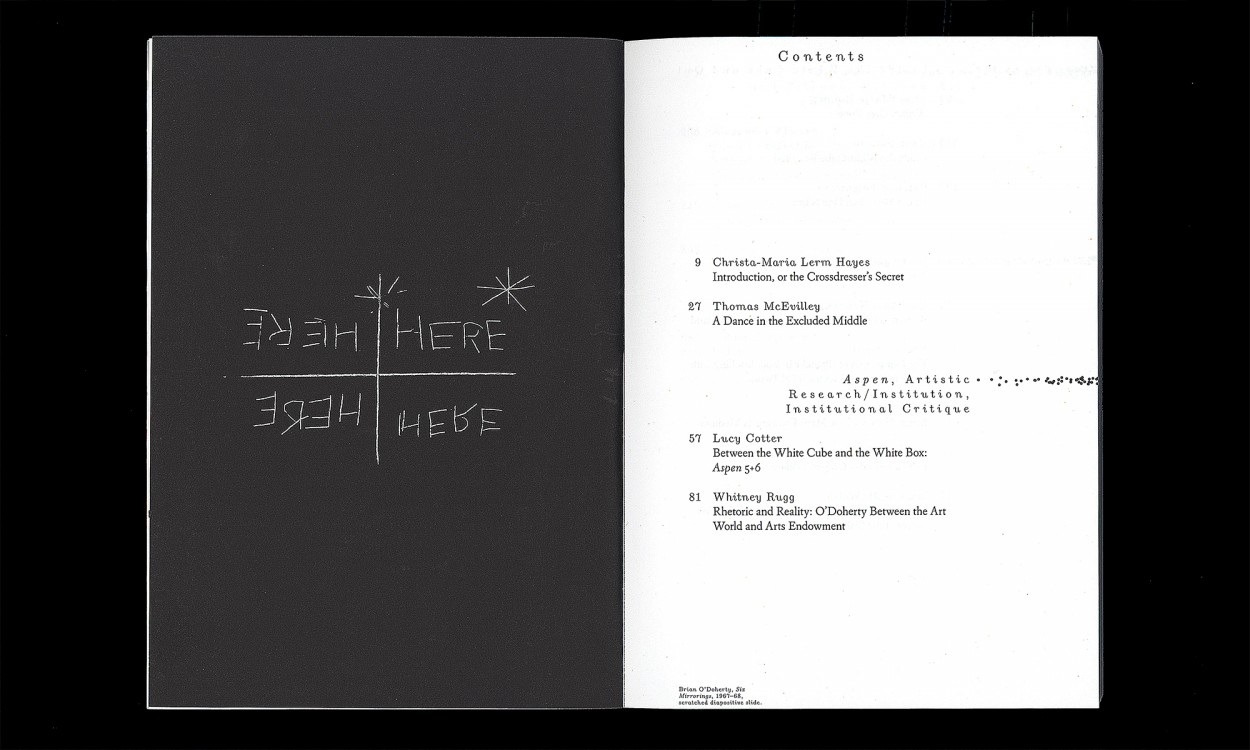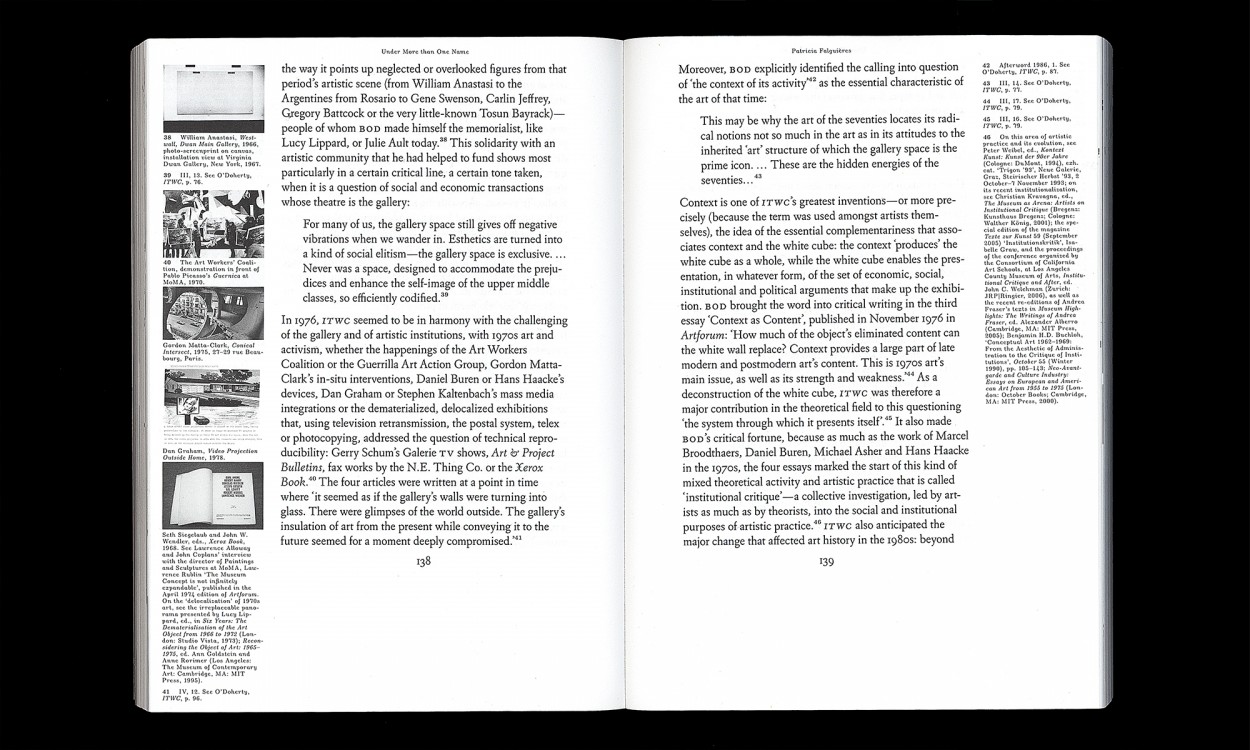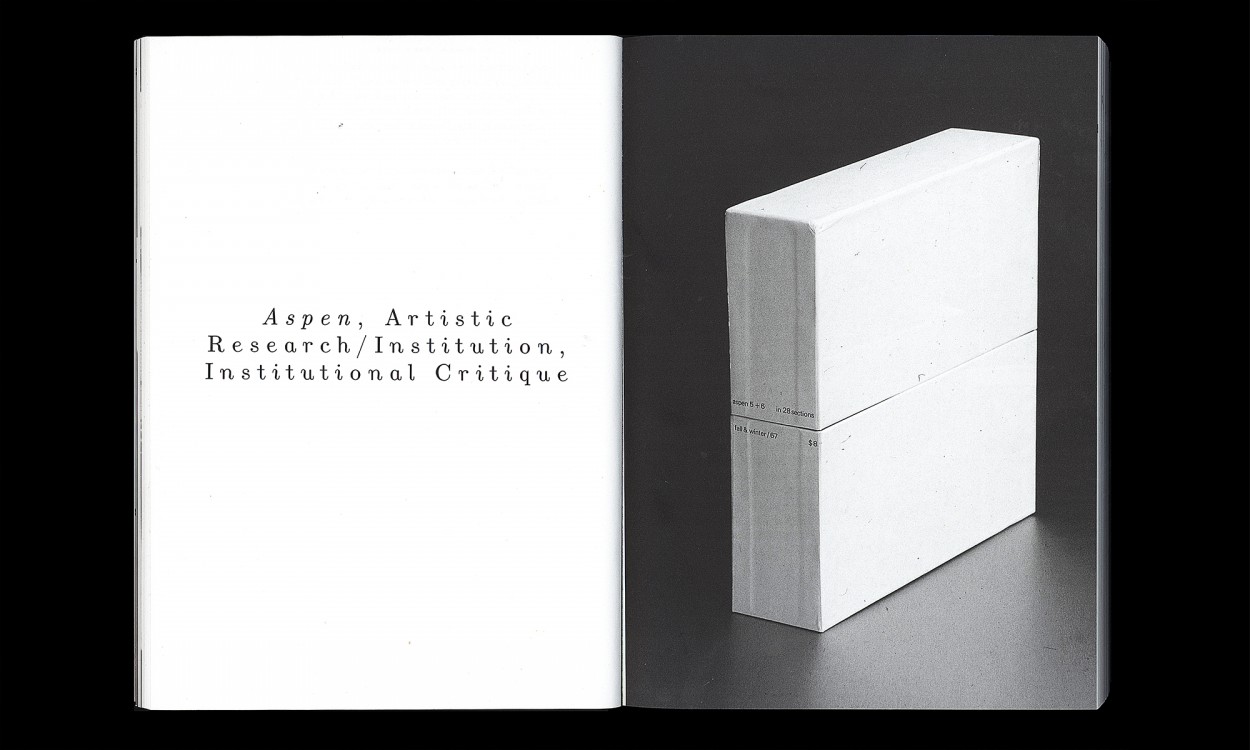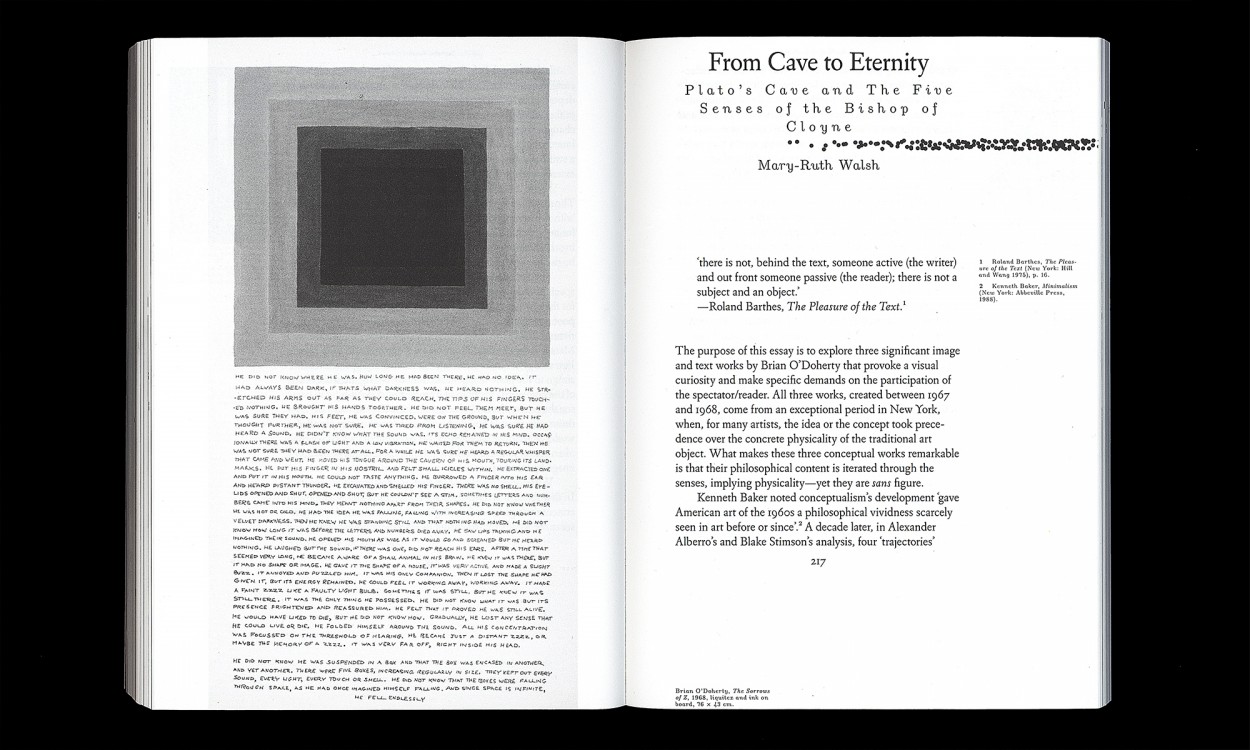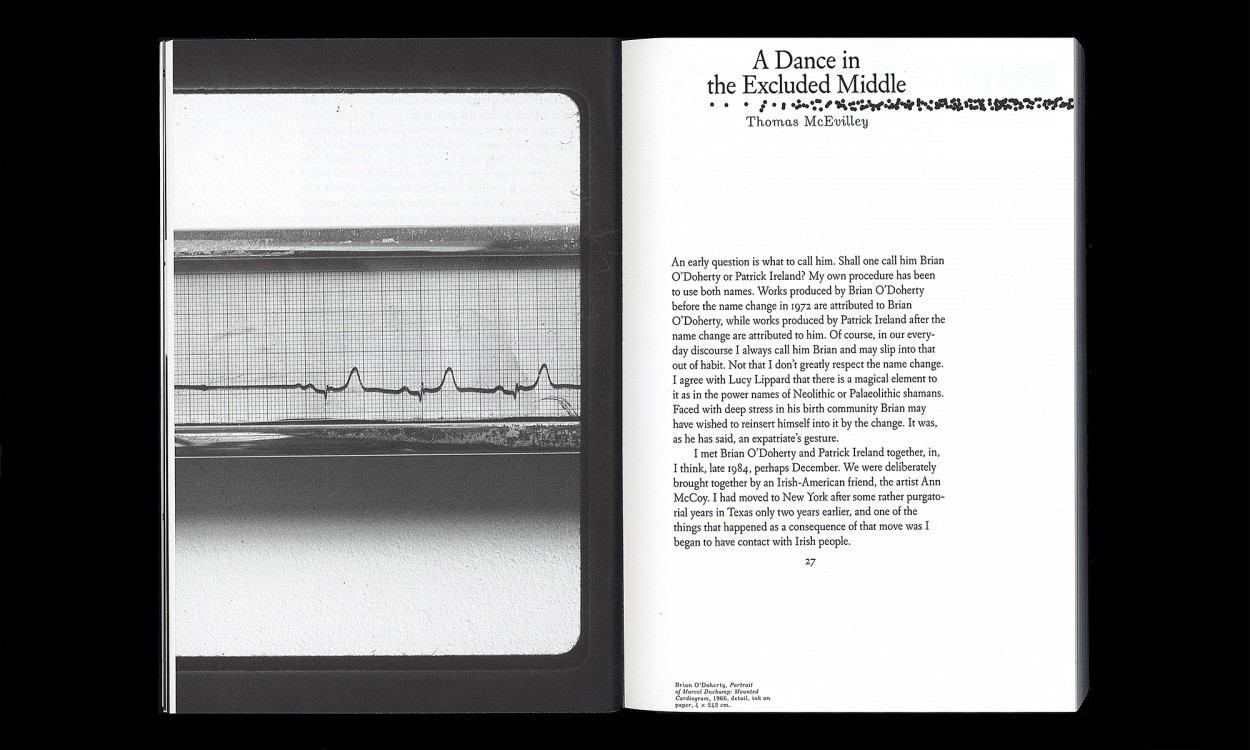Brian O'Doherty/Patrick Ireland
Word, Image and Institutional Critique
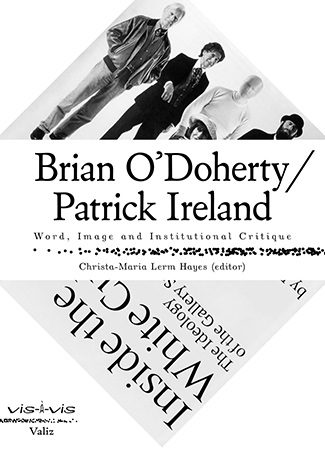
- Features essays on Brian O'Doherty's visual art practice, art criticism, institutional leadership and critique, media work, and literary writing
- Diverse historical and theoretical responses to his work and thinking
Editor: Christa-Maria Lerm Hayes
Contributors: Alexander Alberro, Hans Belting, Anne-Marie Bonnet, Lucy Cotter, Patricia Falguières, Christina Kennedy, Ingmar Lähnemann, Christa-Maria Lerm Hayes, Thomas McEvilley, Brenda Moore-McCann, Barbara Novak, Whitney Rugg, Yvonne Scott, Mary-Ruth Walsh
Design: Sam de Groot
Series: vis-à-vis
2017, Valiz | supported by Trinity College, Dublin, University of Amsterdam | paperback | 304 pp. | 23 x 17 cm (portrait size) | English | ISBN 978-94-92095-24-4
Exhibition INSTITUTIONAL WORK, INSTITUTIONAL CRITIQUE Brian O’Doherty / Patrick Irelandat Van Abbemuseum from 24/11/2019 - 02/02/2020.
Guest Curator: Christa-Maria Lerm Hayes.
In the media:
- Book review of Brian O'Doherty/Patrick Ireland in Irish Arts Review, March 2018
This collection of essays assembles investigations of Brian O’Doherty’s / Patrick Ireland’s seminal work: his visual art practice, art criticism, institutional leadership and critique, media work, and literary writing. The international authors provide fresh perspectives on an oeuvre that has resonance on both sides of the Atlantic.
O’Doherty’s role in and for conceptual art and minimalism in New York through, among others, publication of a box-shaped journal, Aspen 5+6 (1967) is as much a theme as his seminal critique of the Modernist white cube gallery (Inside the White Cube, 1976), his art-historical ventures, and Irish origins. O’Doherty’s key role in creating funding mechanisms for conceptual and live art in the US (as a Director of the National Endowment for the Arts) is featured, together with his differentiation and calling into question of many categories, such as landscape, drawing, the senses, and word and image relations. He anticipated many now current concerns, especially art writing and artistic research. This new appreciation of his work is achieved through the diversity of historical and theoretical responses that characterizes this anthology. The focus, however, lies on his mode of thinking, which embraces the paradox. It can be recognized in the single-minded pursuit of his art practice and his other monumental contributions to twentieth-century culture, i.e. between institution and institutional critique, both inside and outside the white cube, and in word and image. He sits in the most fruitful place: between all the stools – and he has thought through what it may mean when those working in and with art find themselves there.

